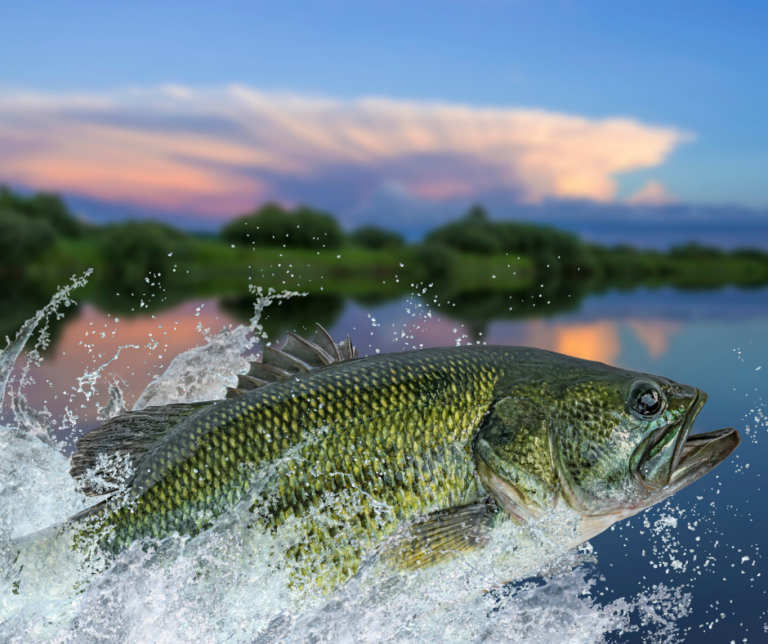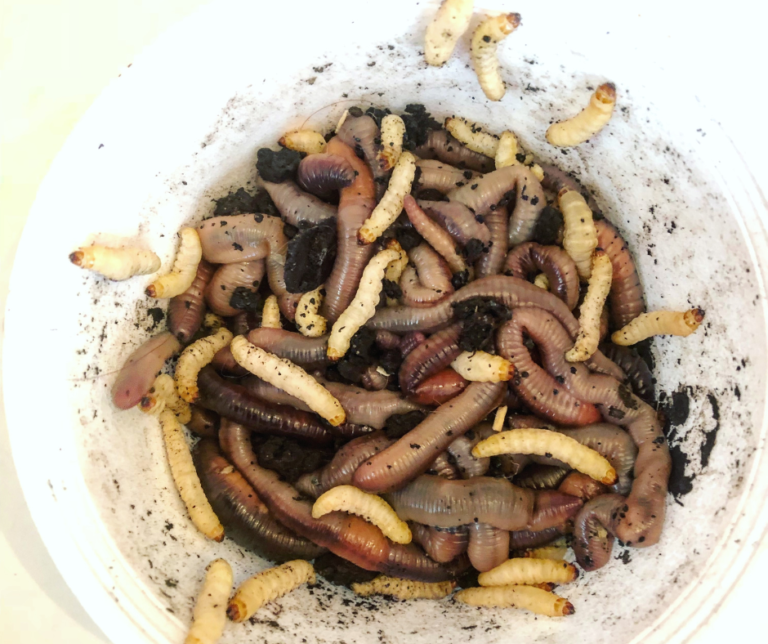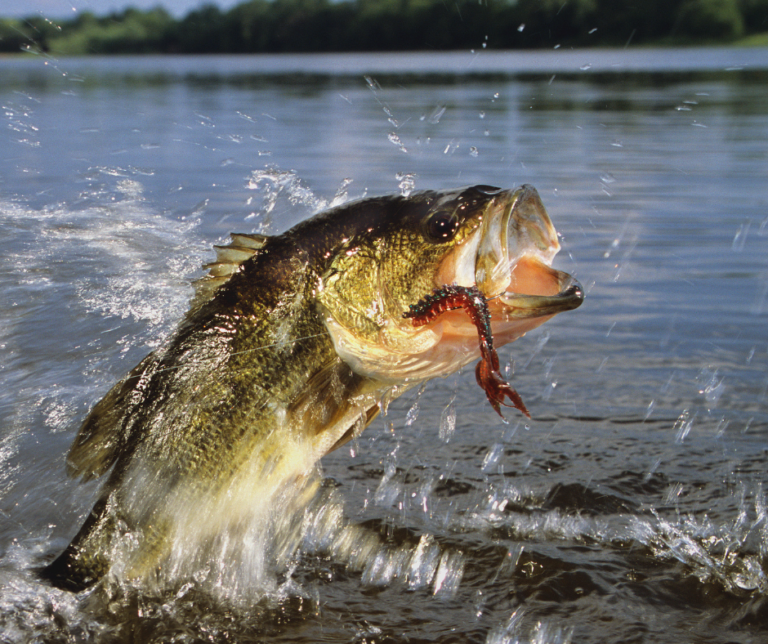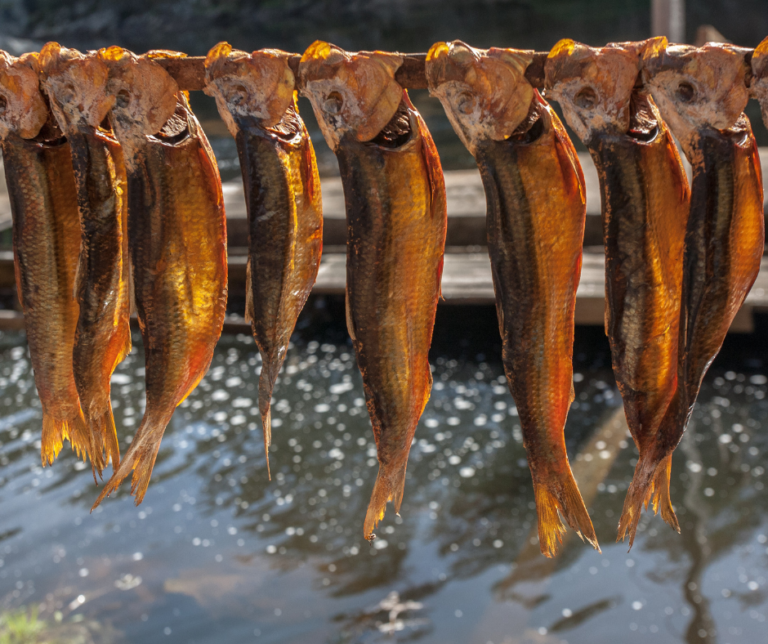Pike Vs. Pickerel Vs. Muskie: A Comprehensive Comparison of Freshwater Predators
When targeting freshwater predators, muskie vs pike and Pickerel are some of the most sought-after species. While these fish share certain similarities, such as their elongated bodies and predatory behavior, distinct differences are important to understand for both anglers and conservation efforts.
Thank you for reading this post, don't forget to subscribe!In this comprehensive comparison of muskie vs pike, and Pickerel, we will delve into the key characteristics of each species, including their habitat, behavior, and diet. By exploring these differences, anglers can improve their chances of targeting and catching the species they desire while ensuring the sustainable management and conservation of these valuable freshwater predators.
What is a Pike Fish?
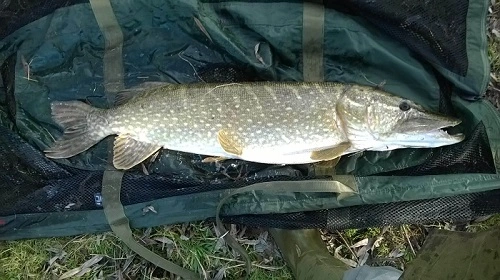
Pike (Esox lucius) is a freshwater fish species belonging to the family Esocidae, including muskellunge and Pickerel. Pike is a popular game fish widely distributed in North America, Europe, and Asia freshwater lakes, rivers, and streams. They are highly valued by anglers for their fighting spirit and delicious taste. We will explore Pike’s appearance, habitat, fishing techniques, conservation status, and other interesting facts.
Pike are fascinating and majestic freshwater predators, often considered the “Wolves of the Water” due to their keen hunting instincts and striking appearance.
Body Coloration
Pike has a distinctive body shape and coloration. The fish has a long, torpedo-shaped body with a flat head and a mouth full of sharp teeth. The back and sides of the fish are usually olive-green to brown, with lighter-colored spots or bars. The belly is usually White or Yellowish in color. Pike is not typically dangerous to humans but can be aggressive when provoked or threatened.
Appearance
The Pike has a Cylindrical Shape, a pointed snout, and a large mouth with sharp teeth. It has a dorsal fin, an anal fin, and a caudal fin. The dorsal fin is on the back of the fish, while the anal fin is on the underside. The caudal fin is the tail fin used to propel the fish through the water.
Pike can be distinguished from muskie and Pickerel by their spotted markings, absence of scales on their cheeks, and narrow, elongated body shape.
Muskie vs pike: Average Size and weight of pike
The average size of a Pike varies depending on its habitat, diet, and other factors. Generally, Pike can grow up to 4 feet long and weigh over 60 pounds. However, most Pike caught by anglers are between 20 and 30 inches long and weigh between 3 and 10 pounds.
Fins and gill plates
The Pike has three primary fins with five gill plates: the dorsal fin, anal fin, and caudal fin. These fins provide the fish with stability and maneuverability in the water. The dorsal fin is on the back of the fish, the anal fin is on the underside, and the caudal fin is on the tail fin. While gill plates help protect the fish’s gills from damage and provide a barrier against predators.
Habitat
Pike are found throughout North America, Europe, and Asia in freshwater lakes, rivers, and streams. They prefer clear, cool water with a moderate to slow current. Pike are ambush predators who typically hide near submerged vegetation, rocks, or other structures to catch prey. Pike can live up to 25 years in the wild. Pike feed on a variety of prey, including smaller fish, frogs, and even small mammals like muskrats. Pike feed on a variety of prey, including smaller fish, frogs, and even small mammals like muskrats.
Fishing for Pike
Pike fishing is a popular pastime for many anglers. Several popular techniques for catching Pike include trolling, casting, and jigging. jerk baits, spinnerbaits, and topwater lures. Anglers can also use live bait such as minnows, leeches, or worms.
Seasonal patterns
Pike are most active in the spring and fall when water temperatures are cooler. Pike may move to deeper water during the summer to escape the heat. In the winter, they may become less active and move to deeper water or near the bottom.
Conservation status
The conservation status of Pike varies depending on the location and population. In some areas, pike populations are healthy and well-managed, while in others, they may be threatened or endangered. It is important for anglers and conservationists to understand the status of pike populations in their area and take steps to protect them.
Pike fishing can be a thrilling experience for anglers, but it requires specialized knowledge and techniques to catch these freshwater predators.
How to Fish for Northern Pike
Pike are typically found in weedy, shallow areas of lakes and rivers, as well as near drop-offs and other underwater structures. Use lures that imitate the Pike’s prey, such as spinnerbaits, crankbaits, and topwater plugs. On a bobber rig, you can also use live bait, such as minnows or worms.
Pike Fishing Tips
To increase your chances of catching Pike:
- Use a wire leader to prevent the Pike’s sharp teeth from cutting your fishing line.
- Vary your retrieve speed and direction to mimic the movements of prey.
- Use medium to heavy rods with a strong backbone and fast action. Spinning reels with a high gear ratio is ideal for pike fishing. Use a 17-30 lb test line and a wire leader.
- Try fishing at dawn or dusk when Pike is most active.
Biggest Pike Ever Caught: The biggest Pike ever caught was a 55-pounder caught in Lough Derg, Ireland, in 1963. The largest Pickerel ever caught was a 9.38-pounder caught in Lake Winnipesaukee, New Hampshire, in 2017.
If you want to release Pike, use pliers or a de-hooking tool to safely remove hooks from a pike’s mouth. Support the fish with both hands and gently release it back into the water.
Pike Reproduction
Pike spawn in the spring when water temperatures reach 40-50°F. Females lay eggs in weedy areas, and males fertilize them. The eggs hatch in about two weeks.
While keeping Pike in an aquarium is possible, it is not recommended unless you have experience with large predatory fish. Pike require a large tank with plenty of hiding spots and a swimming room. They also have a high waste output and require frequent water changes and filtration to maintain healthy water conditions.
What is a muskie Fish?
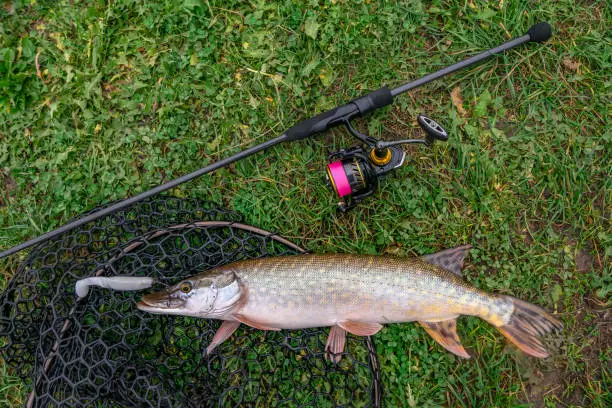
Muskie fish get their name from the Ojibwe word “maashkinoozhe,” which means “ugly pike.” They have long, slender bodies with flat heads and duckbill-shaped mouths. Muskies are characterized by their prominent dorsal fin, followed by several smaller fins. Their scales are relatively large, and they have a distinctive pattern of spots or bars on their sides.
Muskie Fish color
Muskie fish can vary in color from green to brown or even gray, with a lighter underside. They have a musky odor, which is where their name comes from. Muskies are often mistaken for northern Pike or Pickerel but can be identified by their distinct spots and longer body.
Size or Length
Muskies are known for their impressive size; they can grow up to 5 feet in length and weigh over 50 pounds. The current world record muskie caught on a rod and reel weighed 67 pounds and measured 60.25 inches in length.
Habitat
Muskies are native to North America and are found in various freshwater habitats, including lakes, rivers, and reservoirs. They prefer clear, cool waters with ample covers, such as weed beds, rocks, and fallen trees.
Muskies are apex predators and are known for their voracious appetites. They primarily feed on other fish, such as perch, bass, and trout, but will also consume frogs, crayfish, and other small animals. Their diet changes as they grow, and larger muskies will prey on larger fish.
Reproduction
Muskie fish typically spawn in the spring when water temperatures reach around 50-60°F. Females can lay up to 200,000 eggs, which hatch in 10-14 days. Muskies are not mature enough to reproduce until around 3-4.
Fishing for Muskie
Muskie fishing can be challenging; many anglers consider it a trophy fish. Popular techniques include:
- Trolling with large crankbaits.
- Casting with bucktails or topwater lures.
- Using live bait such as large minnows or suckers.
It is essential to use heavy tackle and strong leaders when fishing for muskies, as they are known for their strength and fighting ability.
Conservation Status
Muskie populations have declined in some regions due to habitat loss, overfishing, and pollution. Many states and provinces have implemented regulations to protect muskie populations, including catch-and-release policies, size and bag limits, and habitat restoration efforts.
Muskie fish are an important and fascinating freshwater fish species in North America. They are known for their impressive size, challenging nature, and distinctive appearance. With proper conservation efforts, muskie populations can thrive, providing recreational opportunities for anglers for years to come.
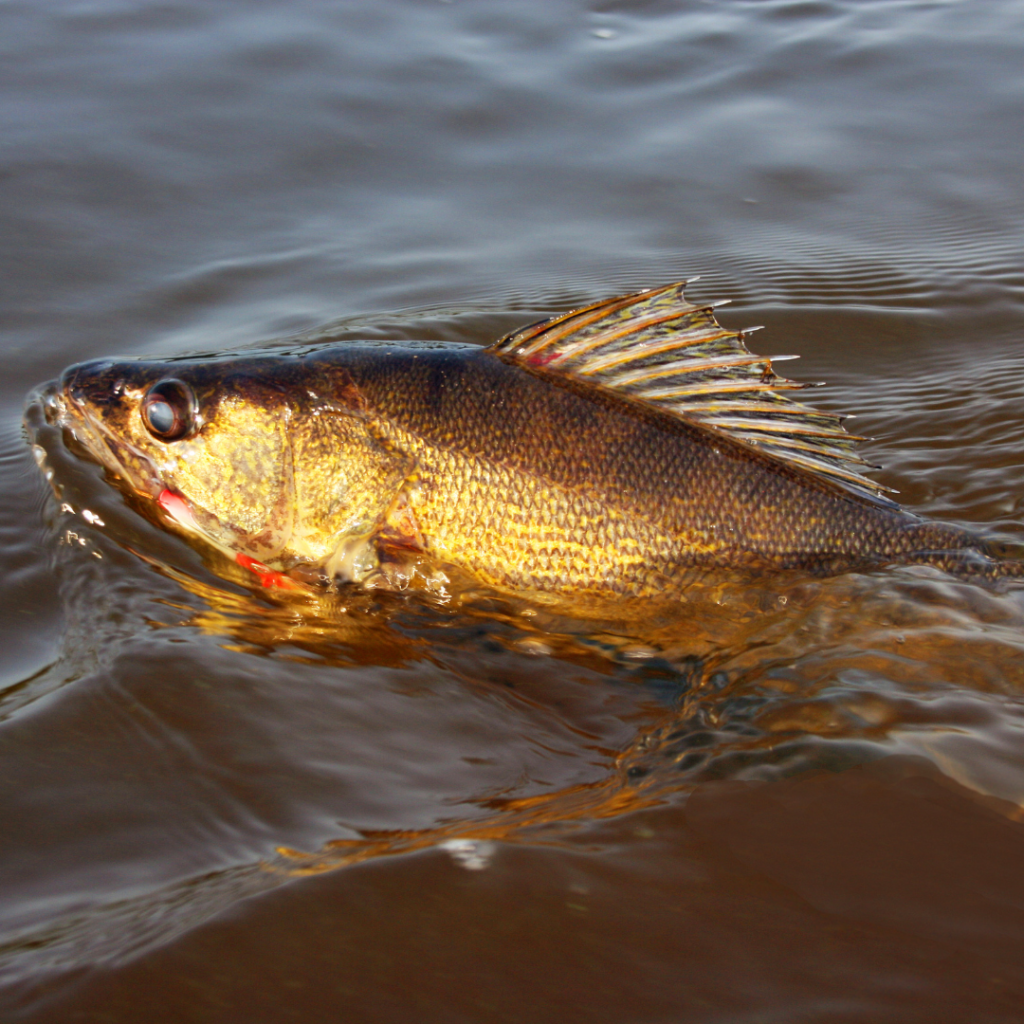
what is Pickerel fish?
The Pickerel (Esox niger) is a predatory fish native to North American freshwater ecosystems. As a relative of the Northern Pike and Muskellunge, it has a distinctive appearance and plays a vital role in its aquatic environment. The study of Pickerel offers valuable insights into the biodiversity and intricacies of freshwater habitats. A pickerel fish is a freshwater fish, also known as chain or grass pickerel.
Appearance
Pickerel fish are long and slender with a pointed snout and are typically green or brown in color with a distinctive pattern of chain-like markings on their sides. Pickerel can be aggressive and territorial towards other fish, especially during spawning season.
Size and weight
The average size of a pickerel is around 2 to 3 feet in length, but they can grow up to 4 feet and weigh up to 20 pounds.
Habitat and diet
Pickerels prefer shallow, weedy areas of freshwater bodies such as lakes, rivers, and streams. It’s possible to keep Pickerel in an aquarium or pond, but they require a large amount of space and clean water to thrive. Pickerel primarily eat small fish but also consume insects, crayfish, and other small prey.
Reproduction
Pickerel reproduce through spawning; their mating season typically occurs in early spring.
Fishing for Pickerel
Popular techniques to catch Pickerel include using live bait, lures, or flies. The best times to fish for Pickerel are early in the morning or late in the afternoon.
Conservation status
The current conservation status of Pickerel varies by species, but they are generally not considered threatened or endangered. Efforts to protect and conserve pickerel habitat include reducing pollution and preserving wetlands.
Common predators of Pickerel include larger fish, birds, and mammals. Chain pickerel are one of the species of Pickerel.
Bait and lures
Live bait such as minnows or worms and lures such as spinnerbaits and crankbaits can be effective for pickerel fishing.
Pickerel may contain high levels of mercury, so it’s recommended to consume them in moderation.
Muskie Vs. Pike: how are they different?
Muskie vs pike are both freshwater fish that belong to the Esox genus and are known for their predatory behavior and impressive size. Here is a comparison between the two species:
Distribution
Northern pike are widely distributed across North America, Europe, and Asia. They are commonly found in Canada, the United States, and Eurasia. Muskies are native to North America, predominantly found in the Great Lakes region, the upper Mississippi River, and parts of Canada.
Size
Muskies are generally larger than pike. The muskellunge (muskie) is known to grow bigger and heavier compared to the northern pike. Northern pike can grow up to 3.9 feet (1.2 meters) in length and weigh up to 55 pounds (25 kg). While Muskie are larger than northern pike, with the ability to grow over 6 feet (1.8 meters) in length and weigh more than 66 pounds (30 kg).
Color
Pike have a greenish, dark color on their back and sides, with a lighter belly. Their flanks are marked with short, light, bean-shaped spots. Muskies have a more varied coloration, ranging from light silver to dark green or brown. They usually have vertical stripes or spots on their sides, which can be dark or faint.
Diet
Pikes are opportunistic predators and eat a variety of prey, including fish, frogs, small mammals, and waterfowl. On the other hand, Muskies are also opportunistic predators, feeding on fish, frogs, small mammals, and waterfowl. However, they tend to be more piscivorous (fish-eating) than pike.
Fishing
Northern pike are popular among anglers for their aggressive behavior, making them an exciting sportfish. Muskellunge are highly sought-after by anglers for their size, strength, and elusive nature, often referred to as “the fish of ten thousand casts.”
Tail Difference
The northern pike has a more rounded tail fin, also known as the caudal fin. The shape of the tail fin is not very distinct, with the two lobes being fairly equal in size. While the muskie has a more pointed tail fin. Its caudal fin has a sharper and more distinct fork, with the two lobes being noticeably different in size, the upper lobe being larger.
Number of pores
Pike have fewer sensory pores on their lower jaw compared to muskies. They typically have five or fewer pores on each side of their lower jaw. Muskies have more sensory pores on their lower jaw than pike. They usually have six or more pores on each side of their lower jaw.
Gills Difference
Northern pike have a fully scaled gill cover. The scales cover the entire surface of the gill cover, making it appear smooth and continuous with the rest of the body. The markings on the gill cover of a pike are similar to those on its body, usually lighter-colored with darker, bean-shaped spots.
Muskellunge have a partially scaled gill cover. The rear portion of the gill cover is smooth and scaleless, while the front part has scales. This creates a noticeable contrast in texture between the two areas. The markings on the muskie’s gill cover typically consist of dark, vertical bars or spots on a lighter background, consistent with the markings on its body.
In summary, when comparing muskie vs pike, they share many similarities; they differ in size, coloration, and distribution. Both species are popular sportfish due to their aggressive behavior and the challenge they present to anglers.
Difference Between pickerel vs pike
Northern Pike and Pickerel are both predatory fish from the Esocidae family, but they have distinct differences. Northern Pike are larger, have an olive green color with light spots, and are found across North America, Europe, and Asia. Pickerel are smaller, have a darker coloration with chain-like markings, and are native to eastern and northeastern North America. Both species exhibit similar predatory behaviors.
Difference Between a Pickerel and a Muskie
The Muskellunge and Pickerel are distinct but related predatory freshwater fish within the Esocidae family. Muskies are larger with vertical or irregular shape with dark markings and prefer clear, cool waters in northern regions. Pickerel are smaller size with chain-like markings and inhabit a wider range of environments, including murkier waters in the eastern United States and southeastern Canada.
Conclusion
As you can see, muskie vs pike pickerel are all predatory freshwater fish, but they have some key differences:
Differences
Size
Muskies are the largest of the three, often reaching up to 5 feet in length, while Pike are typically around 3 feet and Pickerel around 2-3 feet.
Appearance
Muskies have a more elongated body shape and a distinct pattern of vertical bars, while Pike and Pickerel have more rounded bodies and a pattern of horizontal markings.
Habitat
Muskies are found in larger bodies of water, such as lakes and reservoirs, while Pike and Pickerel prefer shallow, weedy areas in smaller bodies of water, such as ponds and streams.
Similarities
Diet
All three species feed on small fish and eat insects and other small prey.
Fishing techniques
Similar techniques can be used to catch all three species, including using live bait, lures, or flies.
Geographic range
All three species are found in North America, with some overlap in their distribution.
Muskie vs Pike: Exploring the Apex Predators of Freshwater Fishing
In the exhilarating world of freshwater fishing, the muskie and pike stand as apex predators, each with its unique allure. Whether you’re drawn to the aggressive strikes of the muskie vs pike, the pursuit of these majestic species promises unforgettable moments on the water. Ultimately, the muskie and pike, while sharing similarities, offer distinct challenges and rewards, making them icons in the angling realm.
Whichever species you choose to target, the thrill of facing these powerful predators adds a dynamic and fulfilling dimension to the angler’s pursuit, ensuring that every cast holds the potential for an extraordinary adventure on the water.

